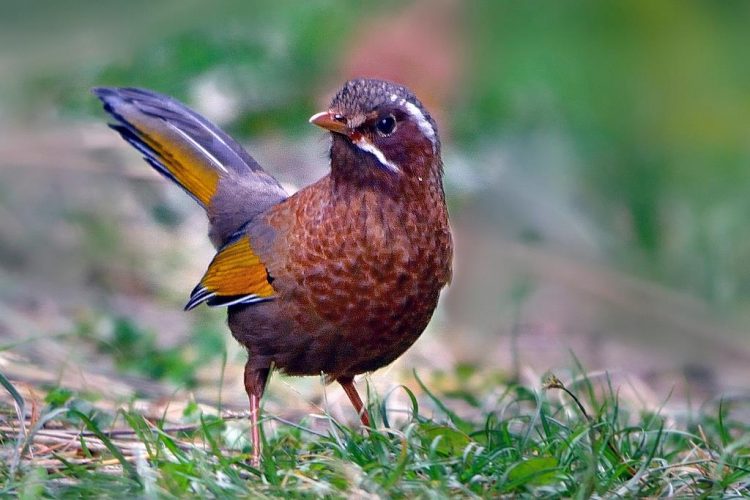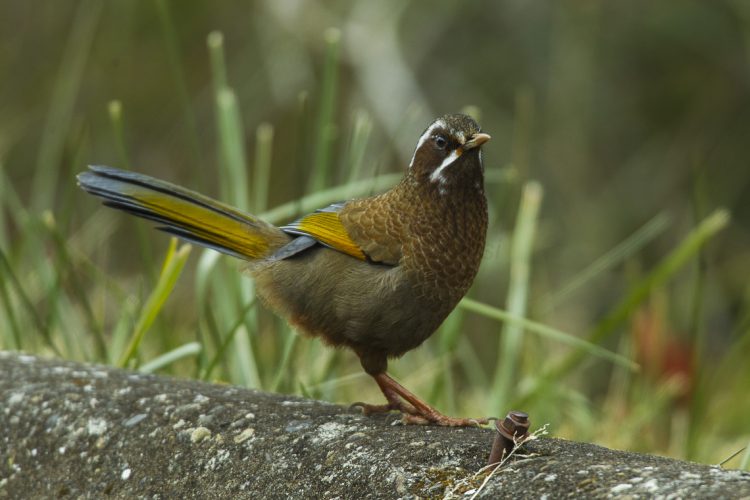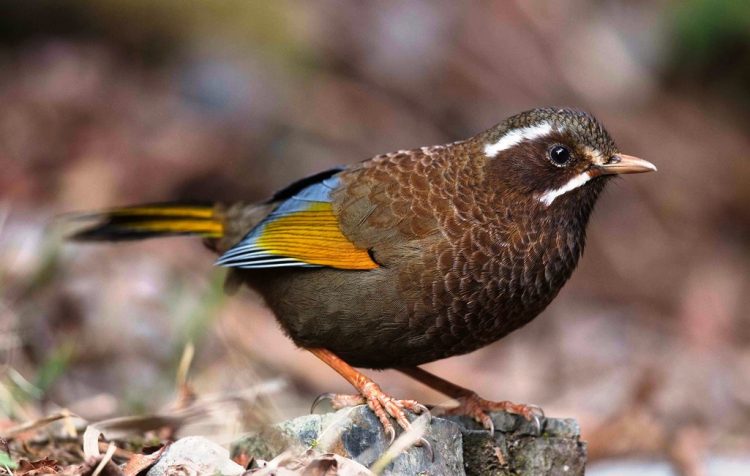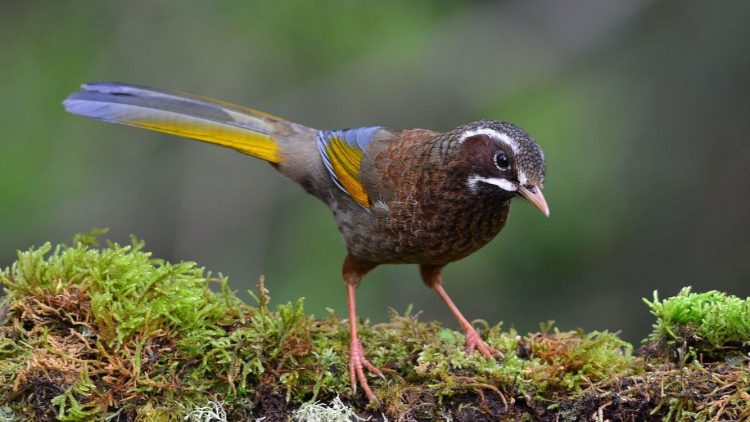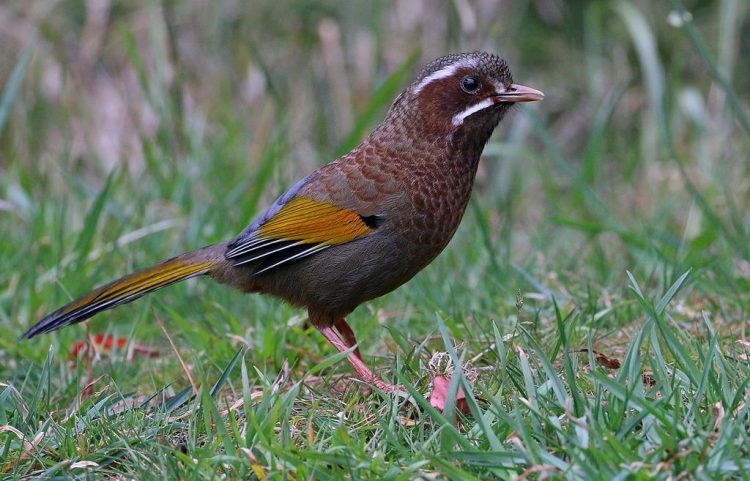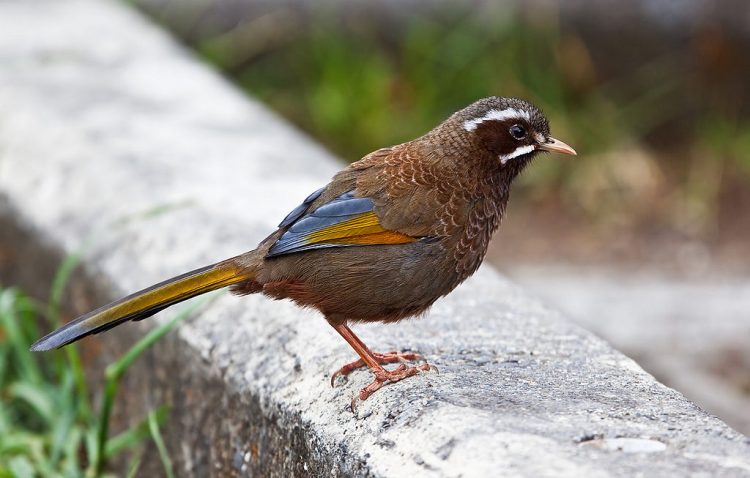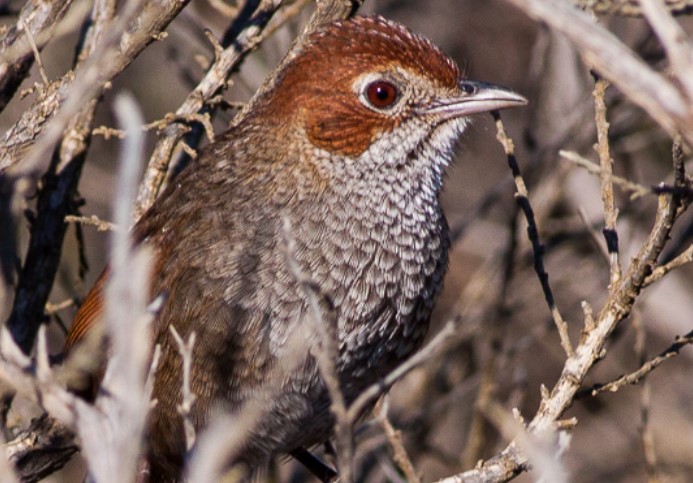The white-whiskered laughingthrush or Formosan laughingthrush, ‘Garrulax morrisonianus’ is a species of bird in the family “Leiothrichidae”. The white-whiskered laughingthrush is a large 26 to 28 cm with a distinctive face pattern. This species is endemic to the montane forests of the island of Taiwan.
This Taiwanese mystery bird lives on the sides of mountains and engages in a migration. That is not triggered by the season, what triggers its movements, or where it goes. The White-whiskered bill is thrush-like and yellowish to horn-colored. The White-whiskered Laughingthrush eyes are black and the legs are strong and brownish pink.
The white-whiskered body weight is approximately 77 grams. This beautiful bird isn’t afraid of humans, as it is a very social species, often seen in large groups. The bird is friendly and approachable, moving about foraging for berries in pairs or at small parties. It has a nice range of calls, some very loud. The white-whiskered laughingthrush is found at elevations of 2500 meters above sea level. The species are found in tall grass, forest undergrowth, thickets, and forest edge scrub.
The White-whiskered Laughingthrush enters open areas by roadsides and in forest clearings. It is more abundant in the mixed coniferous forest than in grassland, pine woodland, or spruce forest; along with Taiwan fulvetta (Fulvetta formosana) and Taiwan yuhina (Yuhina brunneiceps). The bird is habitually a dominant species of ground omnivore. This species’ pairs are monogamous and stay together even in non-breeding periods.
The white-whiskered Laughingthrush feature is the double white stripes, one sub-mustache and the other a supercilium. His lovely features give it the local name of ‘four eye-browed thrushes’. The head, breast, and mantel have a pleasant, scaly appearance. There is a lovely ‘olive-gold wing panel. The White-whiskered Laughingthrush is a common species in Taiwan. The bird population is falling between 10,000 and 100,000 breeding pairs. However, the bird population is decreasing because of habitat destruction and fragmentation. Hence, it is not considered a vulnerable species. During my latest tour of Malam Jabba, I discovered another species known as the streaked laughingthrush. Here’s your chance to see the video on my YouTube channel.
Read More: White’s Thrush (Zoothera aurea)
